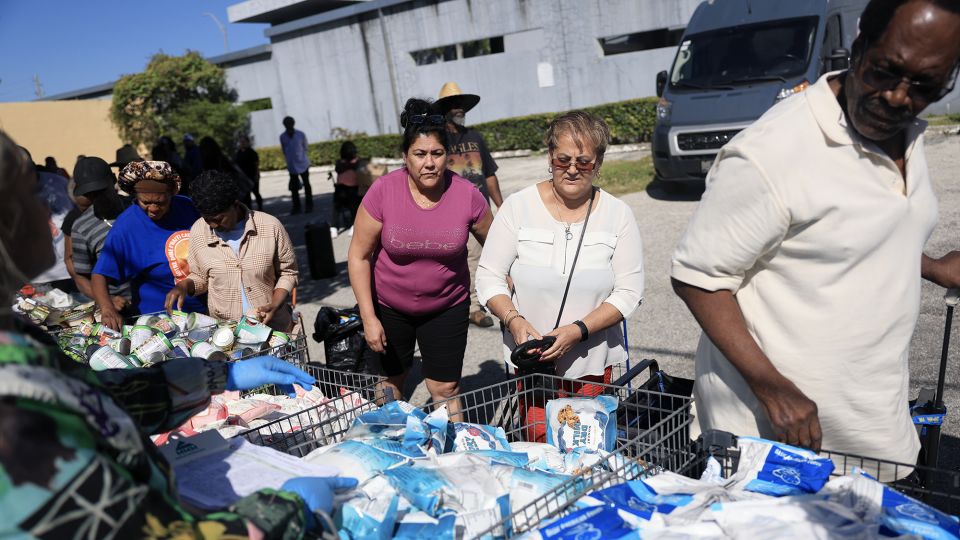Will SNAP Benefits Be Paid in November? Judges' Rulings Explained

Federal Judges Order Use of Emergency Funds for Food Stamp Benefits
Two federal judges have ruled that the Trump administration is required to use emergency funds to provide at least partial food stamp benefits to tens of millions of Americans in November, as the federal government shutdown continues. This decision comes after the U.S. Department of Agriculture (USDA) halted November allocations, citing a lack of funds.
President Donald Trump responded to the ruling by instructing his administration’s lawyers to ask the courts how they can legally fund the benefits as quickly as possible. He stated on Truth Social, “Even if we get immediate guidance, it will unfortunately be delayed while States get the money out.” Trump also emphasized that he would provide funding if given the appropriate legal direction, similar to his actions with military and law enforcement pay.
Despite the court orders, many food stamp recipients will not see immediate relief. The USDA’s contingency fund does not have enough money to cover the total cost of the benefits, which could result in recipients receiving only a portion of their usual allotment. Several legal and procedural challenges must still be overcome before the benefits can begin to flow to the nearly 42 million people enrolled in the Supplemental Nutrition Assistance Program (SNAP).
The USDA halted November allocations, prompting a coalition of Democratic-led states and various organizations to sue earlier this week. It remains unclear whether the administration will appeal the rulings. However, the Justice Department signaled during a hearing that it would do so if US District Judge Indira Talwani in Boston issued an adverse ruling.
Judge Talwani did not require the administration to tap into the contingency fund but stated that the USDA was required to use money from the rainy-day fund to partially cover November benefits. She gave the agency until Monday to decide whether it would use only those funds or also dip into a separate pot of money.
In a separate case, a judge in Rhode Island ordered the government to use the contingency fund to ensure at least some benefits could be distributed. In a written ruling released Saturday, Judge John McConnell wrote that the administration must make a partial payment to SNAP beneficiaries using the contingency funds by Wednesday. He also suggested that the USDA should find additional funds to provide full benefits to recipients.
Delayed Payments and Challenges
Whatever happens in court, it will take time for SNAP recipients to get access to any assistance in November. States stopped the process of issuing benefits for November after the USDA sent them a letter on October 10 ordering them to do so. States send SNAP enrollees’ information to vendors every month so they can load funds onto recipients’ benefit cards, often days or weeks before the new month begins. These steps need to take place before SNAP can restart.
The delay will be felt immediately. Some 3 million recipients should receive their benefits on November 1, according to an estimate by Code for America. The number grows to nearly 13.7 million by November 5, with remaining SNAP enrollees getting their allotments on a staggered basis during the month.
Gina Plata-Nino, interim director of SNAP at the Food Research & Action Center, said, “They are not going out on time” regarding the November benefits. Providing full payments would be the fastest way to get assistance to food stamp recipients.
“If the administration complies with the courts’ rulings to release the SNAP contingency funds immediately and supplements those amounts using its legal transfer authority, which the courts also affirmed, then SNAP benefits could begin to be issued with only a short delay,” said Dottie Rosenbaum, director of federal SNAP policy at the left-leaning Center on Budget and Policy Priorities.
Partial Payments and System Challenges
However, the process could become more complicated if the USDA opts to only tap into its contingency fund and doesn’t augment it with leftover tariff revenue dedicated to child nutrition programs. The emergency fund only has $5.3 billion remaining, while benefits total about $8.2 billion for the month.
The USDA also has access to nearly $17 billion in tariff revenue, but a Justice Department attorney told a judge Friday that using the funds for SNAP would hurt the child nutrition programs that the money supports. Both Talwani and Judge McConnell left it up to the USDA to decide whether to use the additional resources to pay full benefits in November.
If only the contingency fund were tapped, the USDA would have to reduce benefits for all SNAP recipients, which it has never done. State agencies would need to recode their systems to issue the smaller benefit amounts, which could result in payment errors.
“Because no template, processes, or past experience exist to inform a reduction in benefits, there are multiple variables which could lead to significant problems in attempting to reduce benefits for every SNAP household in the country,” Patrick Penn, deputy undersecretary of the USDA’s Food, Nutrition and Consumer Services, said in his declaration.
For at least some states, the process could take anywhere from a few weeks to several months, Penn said, drawing upon informal conversations with state agencies. Before states could even act, the USDA would also have to determine how to calculate and authorize the reduced allotments. This effort could be hampered if its employees have been furloughed during the shutdown or laid off or departed amid the Trump administration’s efforts to downsize the federal government.
While some states have identified potential ways to issue smaller benefits quickly, the methods must be programmed, tested and verified, which could take time. If recipients receive partial benefits in November, they would get retroactive payments to make them whole once the government reopens.
Post a Comment for "Will SNAP Benefits Be Paid in November? Judges' Rulings Explained"
Post a Comment